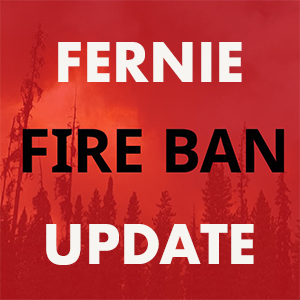
On that fateful day of the the Coal Creek mining disaster, May 22nd 1902, an explosion ripped through the the No. 2 and 3 mines of Coal Creek. The explosion resulted in the deaths of over 128 miners, making it one of the deadliest mining disasters in Canadian history up to that time. The cause of the explosion was attributed to a buildup of highly combustible coal dust and methane gas, a common hazard in coal mines of the era. The above picture shows three miners standing outside the entry of No. 3 Mine after the explosion.
Rescue efforts were hindered by the extensive damage to the mine shafts and the presence of toxic gases. Despite the heroic efforts of rescue teams, including volunteers and mine officials, many miners perished due to the force of the explosion, as well as subsequent fires and the inhalation of poisonous gases.
The Coal Creek mining disaster sparked widespread outrage and led to increased scrutiny of safety practices in coal mines across Canada. It also highlighted the harsh working conditions endured by miners and the need for improved safety regulations and enforcement.
In the aftermath of the disaster, inquiries were conducted to determine the cause and prevent similar tragedies in the future. While the Coal Creek mining disaster remains a somber chapter in Canadian mining history, it served as a catalyst for reforms aimed at enhancing safety standards and protecting the lives of workers in the country’s mining industry.

Above is the Mass funeral- 17 public funerals were held for the victims, one with 14 coffins in the procession.
Kevin Knight posted that in 1902 the Streets and Avenues in West Fernie were named in memory of some of the men and boys that were killed in the 1902 Coal Creek Mining Disaster.
Following are the names:
McDonald Avenue – “Willie” McDonald, boy, coupler.
McLeod Avenue – John R. McLeod. Single, from Nanaimo, B.C. Malcolm McLeod, miner.
Hand Avenue – Sam Hand, fireboss, Single, from Audley, England.
Colclough Avenue – Aaron Colclough, miner.
Beach Avenue – George Beach, shot-lighter – Single.
Stewart Avenue – John Stewart, miner.
Beaver Street – George Beaver, miner.
Wilson Street – Harry Wilson. – James R. Wilson Jr., miner.
Glover Street – Thomas Glover. Married, wife and six children.
Sangala Street * – Joe Sangala, coupler, Married.
Angelo Street* – Andrew Angelo, loader – Single.
Camara Street* – Anthoney Camara, miner.
Stevens Street* – Thomas Stevens. Married.
*No longer existent. Annexed by surrounding properties at an early date.
The exceptions to the above names are Mill Street, Hesketh Street, Commons Street, Eckersley Street, Riverside Street and Vanderberg Lane, which came about later after building lots were subdivided.
The Coal Creek mining disaster remains a significant part of Fernie’s history, influencing its culture, economy, safety practices, and community spirit. While the tragedy brought profound sorrow, it also sparked resilience, unity, and a commitment to honoring the memory of those who lost their lives.
Pics: The Fernie Museum
























